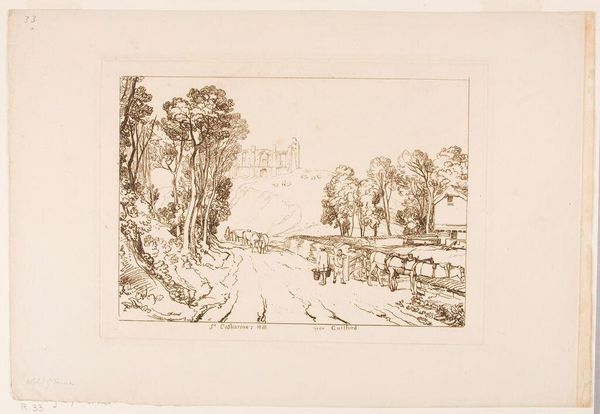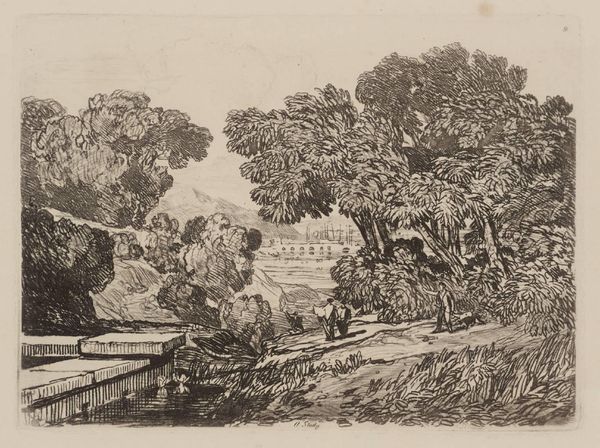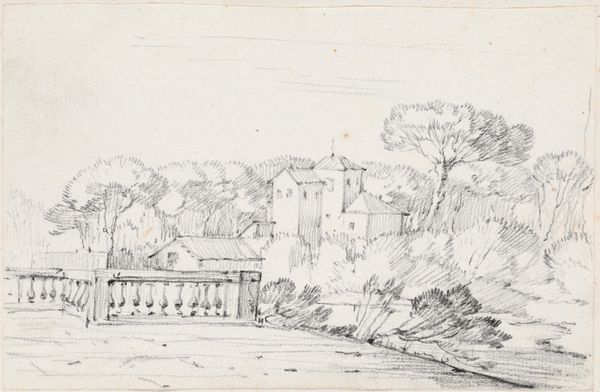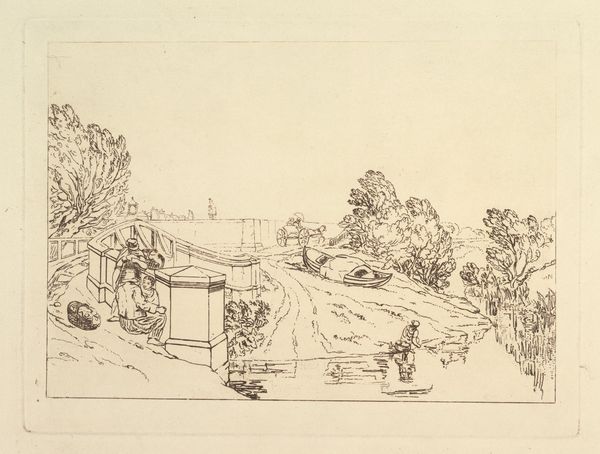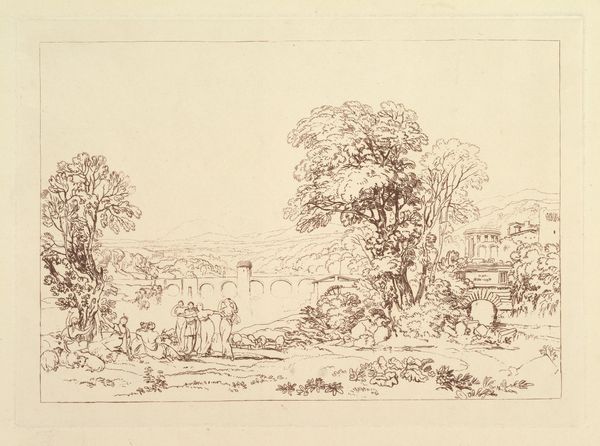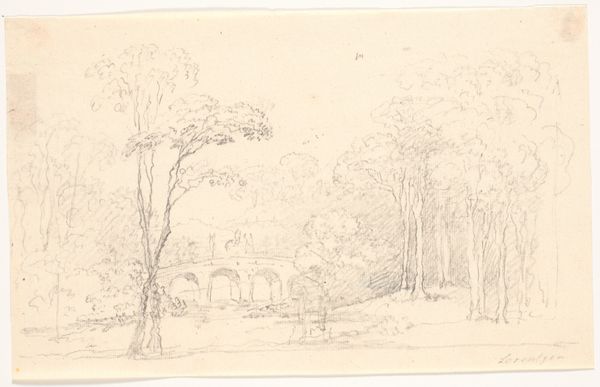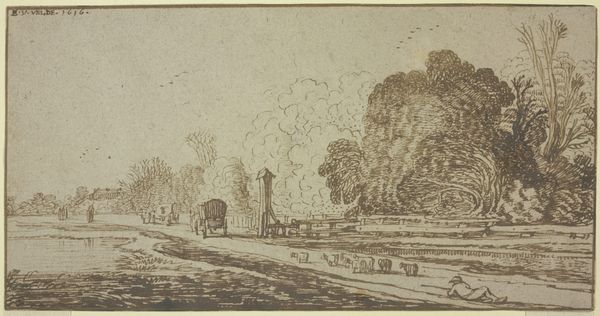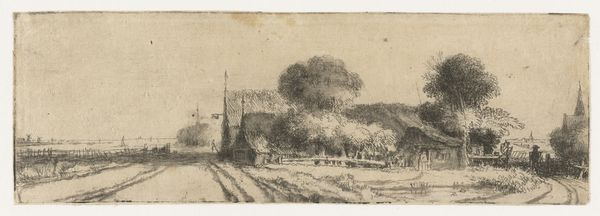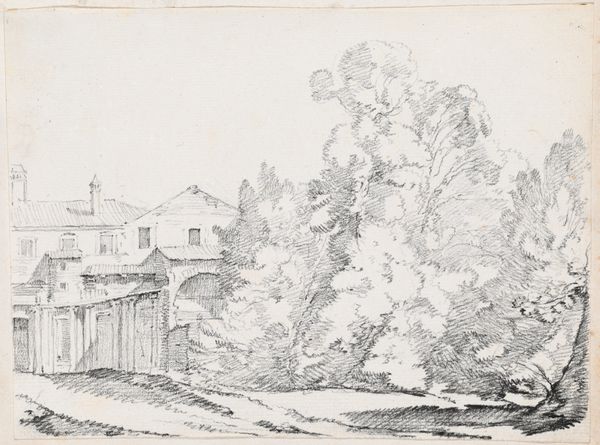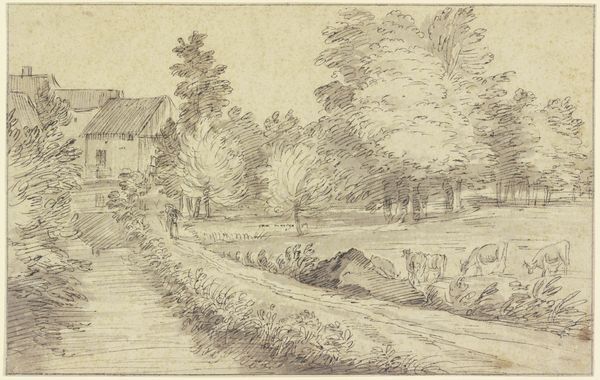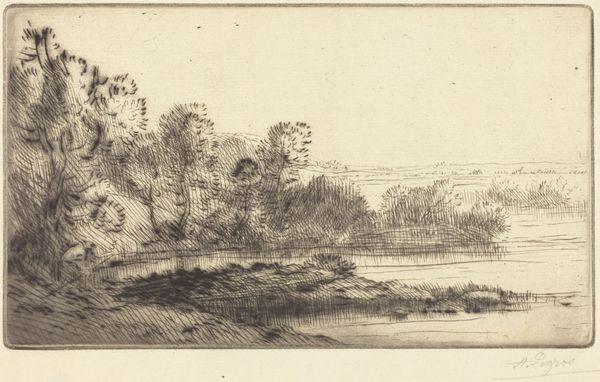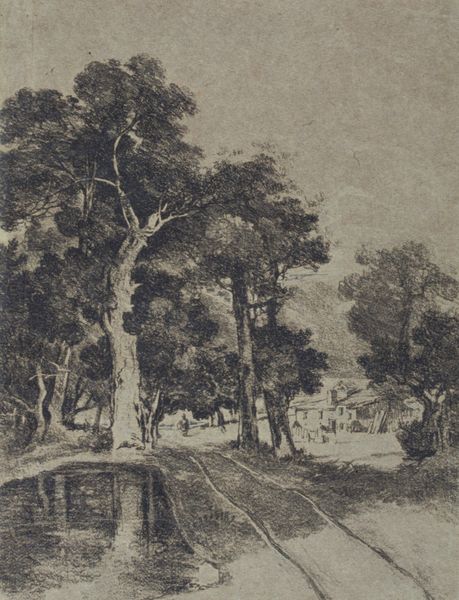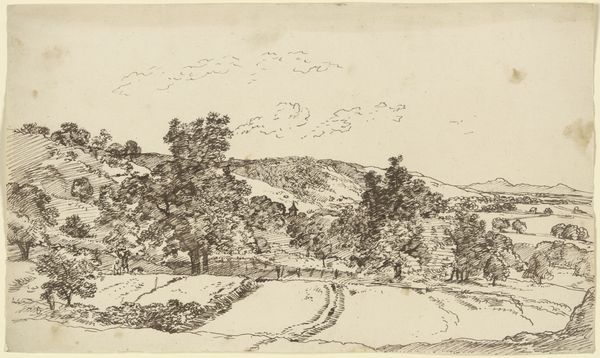
Saint Catherine's Hill Near Guilford Possibly 1811
0:00
0:00
drawing, print, etching, ink
#
drawing
#
ink drawing
# print
#
pen sketch
#
etching
#
landscape
#
etching
#
ink
#
romanticism
#
cityscape
#
history-painting
Copyright: National Gallery of Art: CC0 1.0
Curator: Turner’s etching "Saint Catherine's Hill Near Guilford," possibly from 1811, presents a rural scene dominated by a skeletal structure on a hill. It's striking how the built and natural environments meet, almost wrestle for dominance of the picture plane. What catches your eye initially? Editor: Well, first, I'm struck by the etching's stark quality. It has this very practical, almost diagrammatic feel – like it’s less about romanticizing the landscape and more about documenting its working components: the road, the animals, even the bare trees. It's like a blueprint for rural life. Curator: That's a keen observation. Turner often depicted landscapes undergoing transformation, reflecting social and economic shifts of his era. Note how St. Catherine's Hill, historically a site of pilgrimage, looms in the background—a silent witness to the changing landscape. How do you see that interacting with the figures? Editor: Exactly, and look closer at those figures—they’re dwarfed by the scale of the land and, indeed, the looming historical presence that you rightly pointed out. The way they’re sketched gives the sense that they are laboring within the existing framework, dependent on the land. It’s fascinating how he draws our attention to their work in a way that connects the figures directly to the etching medium. The whole composition seems about delineating what exists, the material conditions if you will, more than anything else. Curator: It resonates deeply with broader narratives about the laboring class in early 19th-century England and their relationship to land ownership, social mobility, even to historical structures such as the one above St. Catherine's Hill. Turner engages with those anxieties. It encourages the audience to confront these complex sociopolitical concerns through art. Editor: Yes. The labor really becomes materialized. The act of depiction then is also an engagement with materiality, class and process. You begin to notice the dialogue and interaction that can be expressed, like a material and its connection to those using them. It seems like Turner aimed to provide insight, if not agency, in something usually invisible in art. Curator: By viewing art from these overlapping perspectives—focusing not just on who made the art but why, for whom, and in what historical context—we deepen our comprehension, acknowledging that meaning is constructed through multifaceted forces. Editor: Indeed. Understanding the means and mode can highlight its historical footprint. It shifts the way you experience, interpret, and draw inferences based on the physical reality of those laboring for it.
Comments
No comments
Be the first to comment and join the conversation on the ultimate creative platform.
